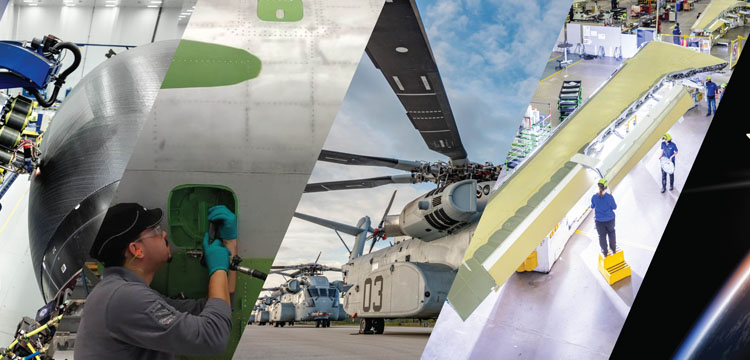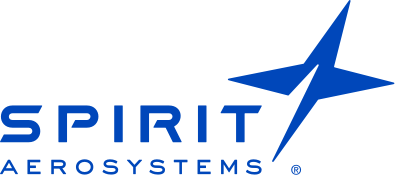

How to Make eVTOL Aircraft Possible
Cindy Hoover, VP Defense & Space Engineering, Research & Technology and Core Engineering
The creators of the Jetsons got some things right in their version of the 21st century. We’re a tech-forward world where convenience, ease-of-use and innovation reign supreme. And while it’s hard to say if we’ll ever live in buildings suspended high above the Earth with friendly robot butlers, the next big idea that’s on-par with the show is traveling in smaller flying vehicles throughout and between cities.
Electric vertical take-off and landing (eVTOL) aircraft are what can turn the Jetsons’ whimsical depiction of modern life into a more normal yet life-changing form of transportation.
The possibilities are exciting. But eVTOL companies have a difficult task to get their innovations off the ground.
We’ve talked with companies in the eVTOL space and are hearing a few key themes that are slowing them down. The commonality? Design and manufacturing complexities.
Many eVTOL companies want rapid prototypes so they can more quickly develop and begin building low-rate production units. They also want to use this same low-rate production design for high-rate production. The challenge is that different manufacturing methods may be needed in either stage. And the FAA closely regulates the materials and associated allowables, which may be different for prototypes than they are for high-rate production. Overcoming these challenges will require collaboration, pragmatism and a dedication to the vision to solve.
Here are three valuable tips instrumental in getting development started down the right path to help you move efficiently from prototype to low-rate production and eventually into high-rate production, while maintaining quality through all three phases.
Make sure design, materials and manufacturing work together
Making sure your design, materials and manufacturing work symbiotically together is a foundational element of success, and a highly complex one. Differentiating capabilities are important, but they alone aren’t going to get you to a high-rate production line.
You need a design that meets requirements and is capable of being manufactured at the desired rates. To get there fast, consider what proven, certified materials and methods can be incorporated and where you need to prioritize further innovation.
New materials, for instance, require a lot more testing, resulting in a bigger certification effort and deeper pockets to make it all happen. Testing and approval, in general, is an arduous and slow process. Often times using existing materials, and tailoring them for your specific application, makes more sense than pursuing completely new ones.
The good news is that while designing eVTOL aircraft is a blank slate, we don’t have to start from scratch. We recommend thinking about it in terms of what you need the design to accomplish, what you need from materials to enable the design and what types of manufacturing processes enable both. Are there design improvements you can make to accommodate the material and manufacturing process before going all-in on one final solution? Making them earlier, before anything is finalized, will be more cost- and time-efficient.
Think about industrialization as early as possible
One of the most effective ways to bring your big idea to life, and to do it fast, is to think about how you’re going to scale and produce the aircraft to meet anticipated demand before designs are finalized. As the old adage goes, make sure you can walk before you try to run.
Take the time to plan stages of development before you get there. Prototypes likely will need to use different materials and manufacturing processes than low-rate production. And to smoothly move from low-rate production to high-rate production requires some planning for the use of slightly different materials and manufacturing processes. These three stages – each one critical to achieving the final product – need to be given adequate time to get them right. When they’re rushed, mistakes could be made and budget could be wasted.
Work with an industrialization partner who believes in your vision yet is real with you when tough conversations need to be had. Sugar-coating won’t do anyone any favors. Strong partnership comes in the form of transparency and a dedication to problem-solve when challenges arise – especially in complex endeavors.
Accelerate your learning curve
Creating a product for a market that doesn’t yet exist, and to do so successfully, requires expertise in a lot of different areas. But like we stated earlier, you don’t need to start from scratch and you don’t have to be the expert in all of those areas.
Finding experts who can consult in materials, engineering design, prototyping, scaling production, certification, systems integration and assembly, just to name a few, will get you a long way.
While hiring talent to do the work can be ideal, working with partners outside your organization can grant you access to a team of cross-functional experts and a host of supply chain partners who not only live and breathe their expertise but have the benefit of seeing beyond a singular program. They’ve likely asked the same questions, come upon the same hurdles and problem-solved to find the best possible solution.
In addition, partners who work in diversified markets, on cutting-edge technologies and who can bring abundant resources can accelerate your team’s learning curve. Having multiple skills and experience under one roof – like in-house testing labs to systems integration skills – allows people with different expertise to collaborate, advancing your program.
If you’re feeling any kind of skeptical, sometimes seeing is believing. Tour manufacturing companies’ facilities, like Spirit’s, to get a full understanding of what capabilities and knowledge could be passed onto you.
Helping eVTOL aircraft take flight
The complexities of designing and manufacturing eVTOLs shouldn’t slow progress to reach a Jetsons-like world. They should open the door to deeper conversations and accelerated innovation. What complexities do you need help solving?


